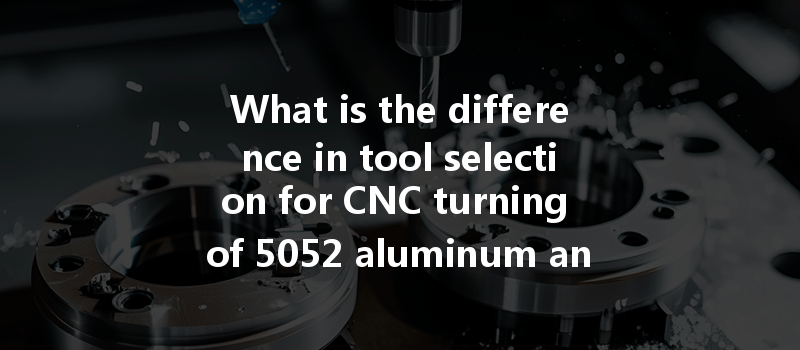Did you know that aluminum is one of the most widely used metals for machining, accounting for approximately 25% of all machined parts? CNC (Computer Numerical Control) turning, in particular, is a favored method for creating precision components in various industries, from automotive to aerospace. But not all aluminum alloys are created equal, and tool selection plays a crucial role in the success of your CNC machining operations. In this article, we will explore the differences in tool selection for CNC turning of two common aluminum alloys: 5052 and
By understanding the properties of each alloy and the implications for tool selection, machinists and manufacturers can maximize efficiency, precision, and cost-effectiveness. Let’s dive into the fascinating nuances of CNC turning with aluminum alloys.
Characteristics of 5052 and 6061 Aluminum
Before digging into tool selection specifics, it’s essential to understand the intrinsic properties of 5052 and 6061 aluminum, as these properties will significantly influence machining practices.
Tool Selection for CNC Turning
When selecting tools for CNC turning operations, various factors must be considered, including alloy properties, machining parameters (like speed and feed rate), and the cutting tool material itself. Here’s how these factors apply to the two aluminum alloys.
The choice of cutting tool material is critical to successful machining. Common materials used in machining tools include:
Recommendation:
For 5052, cobalt carbide tools can be effective due to their ability to handle the toughness of the alloy. For 6061, standard carbide tools would generally suffice, but using tools with a sharper edge can improve finish and reduce machining time.
The geometry of the cutting tool—including the rake angle, clearance angle, and cutting edge angle—affects the efficiency of the machining process.
Recommendation:
For 6051, opt for tools with optimized rake and relief angles to minimize cutting forces. For 5052, consider tools with flutes designed specifically for easier chip removal.
Machining parameters such as spindle speed and feed rate significantly impact tool life and part quality.

Recommendation:
Start with recommended speeds for each alloy—consider speeds of about 1500-3000 RPM for 6061 but maintain slower speeds closer to 700-1400 RPM for 5052 to avoid excessive tool wear.
Using coolant during CNC turning can substantially prolong tool life and enhance the finish of machined parts.
Recommendation:
For 6061, using a water-soluble coolant can promote better heat dissipation. For 5052, consider oils that can mitigate adhesion and help facilitate chip ejection.
Troubleshooting Common CNC Turning Challenges
Understanding the differences in 5052 and 6061 aluminum can help you better prepare for potential machining challenges. Here are common issues and their solutions:
Summary and
In summary, the selection of the right tools for CNC turning of 5052 and 6061 aluminum plays a significant role in machining success and can drive efficiencies, enhance surface finish, and promote tool longevity.
Key Takeaways:
Understanding the unique characteristics of each alloy is essential for successful CNC turning operations. As a CNC machinist or manufacturer, taking these factors into account will ultimately improve quality and reduce costs, making this blog worth your time and consideration.
We hope this comprehensive overview has provided valuable insights into the complexities and best practices of machining 5052 and 6061 aluminum. By applying these techniques effectively, you will ensure a smooth and efficient machining process, regardless of the materials you work with. Consider the importance of informed tool selection as a pivotal aspect of CNC machining; after all, the right tools can make all the difference.


